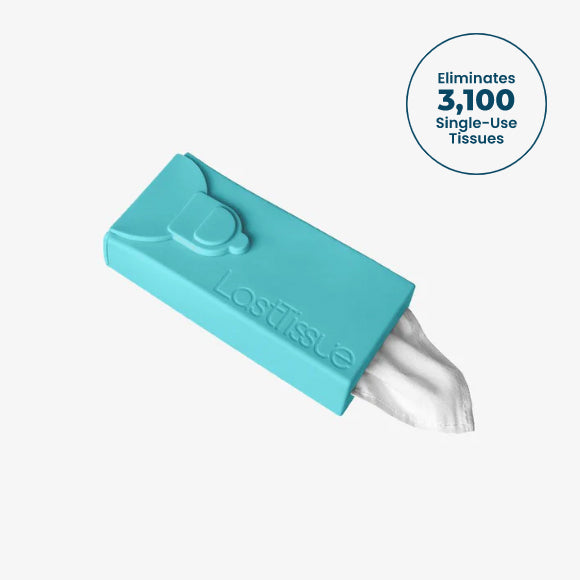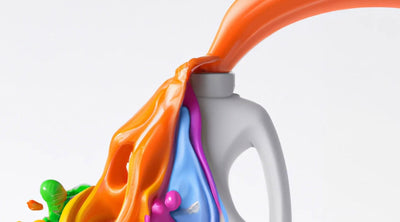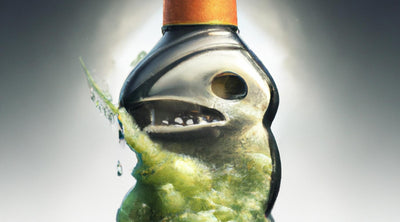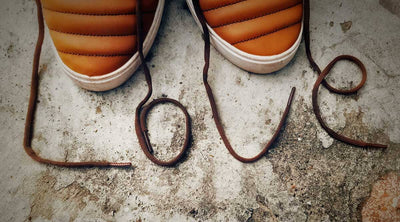Landfills: What Are They And What Problems Do They Cause
04 novembre 2021What Is A Landfill?
The creation of waste by mankind is unavoidable. While a lot of waste can be recycled or repurposed, much of it can’t. The waste that can’t be reused needs to go somewhere and that place is normally a landfill.Here are some interesting statistics on landfills:
- In 2018, about 146.1 million tons of waste were landfilled in the USA. This is the most since records began in 1960. (In relative terms, the picture is much better. Only 50% of American waste generated in 2018 was landfilled. This is down from 94% of the waste generated in 1960 which went to landfills).
- 43 million tons of waste is collected annually in India. Of this, 31 million tons is sent to landfill sites and just 11.9 million tons is treated.
- Globally, more waste is sent to landfills than to any other waste management stream. Around 37% of the 2 billion tons of global waste is processed this way.
It’s also important to differentiate between a dump and a landfill. Dumps are unregulated and unmanaged holes. Trash is buried in them without sufficient ecological or safety measures in place. They are not part of an environmental plan, meaning they can cause significant harm. They attract disease-carrying pests, such as rodents and insects, and leach pollutants and contaminants into the surrounding environment.
By contrast, landfills are specifically managed, located, and constructed to meet environmental regulations. They are also continually monitored. This ensures that they remain compliant with the standards outlined above.
Why Are Landfills Necessary?
In a perfect world, all waste would be recycled or reused. But the reality is many materials can’t be recycled or reused. Humans generate enormous amounts of waste, and some of this needs to be disposed of. Landfills are necessary because they allow us to do this in the safest way possible. They are essentially a managed, secure place for waste storage.Landfills deliver a number of environmental benefits. In the first instance, they limit the risk of environmental pollution. This is because they are carefully designed to keep any pollutants safely contained without harming the surrounding soil, water and air. Secondly, landfills prevent disease transmission, which is made possible by properly sealing materials and keeping pests out.
Ultimately, the best solution would be for humans to produce less waste. But until that happens, landfills are the next best solution.
Why Are Landfills Bad For The Environment

Landfills are not without their downside. In many ways, landfills slow down environmental harm but don’t get rid of it completely. The garbage that is buried breaks down very slowly; meaning people in the future will still need to deal with these materials.
In terms of direct ecological harm, landfills cause three main problems — toxins, leachate, and greenhouse gases. We will now explore each of these in turn.
Toxins
Much of the waste that is deposited in landfills contains toxic materials. Electronic products are an excellent example. The circuit boards and batteries in these items contain many hazardous substances including arsenic, mercury, acids, lead, and solvents. These toxins gradually leach from discarded computers, microwaves, and other electronic goods. As this occurs, it causes environmental harm by contaminating soil and groundwater.
Leachate
As waste slowly breaks down, some of it turns into liquid. Much of this waste, such as PVC, contains highly toxic chemicals, meaning the liquids are often extremely toxic as well. In addition to this, landfill sites are exposed to rainfall as they are being filled. This water filters through the open landfill’s waste, picking up some of these toxins as it does.While there are measures in place to contain this, they are not 100% effective. As a result, leachate eventually contaminates groundwater and waterways.
Greenhouse Gas
Organic matter such as food waste that is sent to landfills is compacted and sealed. As a result, the waste decomposes without oxygen. This anaerobic process produces methane, a harmful greenhouse gas. It is also a flammable gas, which is dangerous in high volumes. The threat these gases pose in terms of climate change is substantial.How Does Your Trash From Home End Up In A Landfill?

Once you throw away your trash, you most likely never give it another thought. But the waste you produce has to be collected, sorted, and transported to a landfill. A garbage truck or another hauler will pick up the rubbish, which will either be taken to a transfer station or directly to a landfill. If it’s taken to a waste transfer station, then it will undergo a sorting process. This is where recyclables and other reusable materials are separated from the trash. These items are all then sent to different destinations. Any trash will be taken from here to the nearest landfill.
What Happens When A Landfill Reaches Its Capacity?
Landfills are vast structures that are designed to contain enormous amounts of waste. Consequently, it takes many years for one to reach its full capacity. When this does finally occur, the landfill is “capped”. This is a process whereby a layer of polyethylene is placed on top to cover it. This is then also covered by soil, clay, and vegetation. This “cap” is a protective barrier, trapping odors and gasses in and keeping rainwater out. Following this, the area can be repurposed into useful spaces like parks or community gardens.What Types Of Landfill Are there?
Many landfill types are in operation today. These differ according to the type of waste they are designed to handle. Find out more on each type below.Municipal Solid Waste (MSW) Landfill
MSW landfills hold non-hazardous waste from residential and commercial sources. This includes households, hotels, restaurants and other similar places. These landfills are kept a safe distance from both suburban and commercial areas. They are designed with liners and leech collection systems to protect the local groundwater from contamination.Construction & Demolition Landfills (C&D)
C&D landfills contain debris that is created through construction and demolition projects. This waste can include materials like wood, concrete, metals, and glass among others. Generally, these landfills don’t accept hazardous industrial waste but some are specifically designed to do so.Hazardous Waste Landfill
As the name suggests, these landfills are designed to safely store hazardous waste. Hazardous waste landfills are tightly regulated for optimal security. They are designed with leak detection systems, runoff controls, and have reinforced liners. This type of landfill is under constant observation to ensure that harmful substances do not harm the local environment. The waste itself includes spent solvents, wood preserves, and other harmful substances.How Do Landfills Work?
Contemporary landfills are designed according to a layering system. Let’s take a look at each of the layers involved to help you understand what happens to trash in landfills.Cells (Old & New)
Each landfill only has a limited amount of space to hold waste. When this runs out, the landfill can no longer accept further materials. Therefore, landfills are designed in a way that maximizes the available space, which is done by compacting the trash into areas called cells.Heavy machinery like bulldozers are used to compress the waste, ensuring that the maximum amount of waste possible is put into the available space. A layer of dirt is then spread over the cell, which is then also compressed on top.
The Bottom Liner System
Landfills are specifically designed not to contaminate the surrounding environment with their waste. One of the ways to accomplish this is through the bottom liner system — a barrier created using robust material like high-density polyethylene. This stops any harmful materials from polluting the soil or groundwater.The Drainage System
The drainage system of a landfill has two functions. Firstly, it channels rainwater and snowfall away from the waste. Secondly, it filters out any liquids produced by the waste, referred to as “leachate”. Drainage systems have a series of drainage pipes, ditches, and collection ponds.
Gas Collection System
Landfill waste decomposes without oxygen. This anaerobic process produces gases like methane and carbon dioxide, which are flammable and so present a hazard. To address this problem, landfills have gas collection systems consisting of pipes placed throughout the site to collect the gas. This gas is then burnt, vented, or converted into energy.
Cap
As described above, a landfill is capped once it has been filled. The land is then covered with soil and vegetation is planted to help combat soil erosion caused by wind, snow, and rain. Thereafter, the area can be repurposed.
How Can We Send Less Trash To Landfills?

Landfills have become a sophisticated means of waste management. Even so, they still produce greenhouse gases, toxins, and leachate, as previously stated. As a result, the ultimate goal is to send as little waste to landfills as possible.
The 3 R’s — reduce, reuse, and recycle — is a great way to achieve this.
- Reduce the amount of waste you produce. Buy less single-use products and switch to greener alternatives where possible.
- Reuse everything you can. Rather than throw out an item, see if you can’t find another way to use it.
- Ensure that you’re recycling everything you can the right way.
Purchase durable sustainable products to facilitate the ‘reduce’ and ‘reuse’ aspect. A company like LastObject aims to combat environmental pollution by producing environmentally friendly alternatives to single-use items. For example, just one LastTissue pack saves the environment from 3100 single-use tissues. As such, it’s a great way to cut down on the amount of trash you’re creating.
Landfills In A Nutshell
The planet is facing an environmental crisis. To overcome it, everyone needs to chip in. Understanding where your trash goes, how it gets there, and what happens to it thereafter, is a good starting point. With a detailed answer to “what is a landfill” and more insight into the problem with landfills, you are in a much better position to reduce your environmental impact.
MORE Sustainability 101 ARTICLES View all ›
Ready to make
the switch?
- Powerful Cleaning
- Dissolves Easily
- Skin-Friendly
- Eco-Friendly
- No Mess














